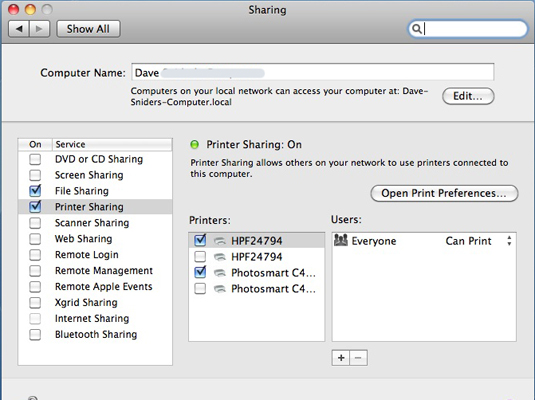
- #Ftp service for mac os x how to
- #Ftp service for mac os x for mac os
- #Ftp service for mac os x mac os x
- #Ftp service for mac os x full
While incredibly useful, they are obviously not as developed as third party FTP clients like Transmit or Cyberduck, but if you’re in a bind and just need to quickly connect to a remote FTP to transfer some files back or forth, it’s more than adequate and it does not require downloading anything additional.
#Ftp service for mac os x mac os x
The FTP features in Mac OS X have been around since the earliest days of OS X, and they’re still around in OS X Yosemite, Mavericks, Mountain Lion, Snow Leopard, you name it, it’s supported. Advanced users may wish to go with paid SFTP applications too, like Transmit or Yummy FTP.
#Ftp service for mac os x full
There are many other options available, including simply using the command line on the Mac, which has full sftp support as well.
#Ftp service for mac os x for mac os
In no particular order, here are a few free FTP apps for Mac OS X: Since the Finder FTP function does not support some features users may wish to have on their Mac, there are plenty of third party OS X apps that can do the job instead, with full FTP, SFTP, FTPS support, downloads, uploads, queuing, permissions changing abilities, read/write support, and much more. What about third party FTP clients for Mac?

You can also start an SFTP server on any Mac to be able to connect to it this way for downloading or transferring files.īy the way, if you were wondering, I have my titlebars set to display full directory paths which is why you see the path on the remote server in the second screenshot. The main benefit to expanding the window is that you get the forward and back arrow navigation buttons, in addition to sorting options to browse through the FTP server by icon, name, date, lists, and the search functions. Navigate to the file or folder you want to copy, then just drag and drop it as if you were copying or moving any other file, and the items will being to transfer to/from the FTP server to the Mac, or vice versa.īy default the window will show as a minified Finder window, but you can expand the window to your familiar Mac OS X Finder style by pulling down the “View” menu and choosing “Show Toolbar”. Once you are connected to the FTP server, you can browse the remote server like any other local folder on your Mac, because the server is treated just like a normal file system window in the Finder.Ĭopying files to the remote server, or downloading them to the Mac, is done easily with simple and familiar drag and drop. Navigating & Transferring Files with FTP & FTPS Because SFTP and SSH in general are generally command line based, that’s really a topic for another article, so we’ll keep things simple here and stick with FTP and FTPS. Nonetheless, OS X does include a native SFTP client as well, and it’s accessible from the Terminal by typing “sftp at the command line. FTPS connections are supported directly in OS X’s built-in FTP functionality, while SFTP through SSH is not accessible through the same “Connect to Server” menu. Something to keep in mind is that FTPS and SFTP are two different protocols FTPS is FTP with a secure SSL layer, while SFTP uses SSH (yes, the same protocol that SSH servers are enabled by with Remote Login in OS X). The minor difference is pointed out in the screenshot below: This is dependent on the remote server having SSL support and acceping FTPS connections, which most servers do. If you want to connect to secured FTPS server, all you need to do is prefix the domain with ftps:// rather than ftp://. If you want to use a secured connection instead you just need to make a tiny modification, which we’ll discuss next. Here is what starting a standard FTP connection will look like:

Click on “Connect” and wait to connect to the remote server.Optional: If you want to add a bookmark to ‘Favorite Servers’ for repeated connections, click on the + icon next to the “Server Address” field.Enter the address of the ftp server in the following format:.From your Mac desktop or Finder, hit Command+K to pull up the “Connect to Server” window (alternatively, you can access this from the “Go” menu).

#Ftp service for mac os x how to
Regardless, here’s how to start an FTP connection from Mac OS X to a remote server: If you want to test this by connecting to a real server, use and login as a Guest.


 0 kommentar(er)
0 kommentar(er)
